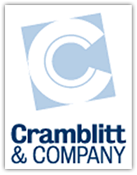Editing: The misplaced art (1)
July 15th, 2009 | 6 Comments
Editing is a lost art, or at least a misplaced one. It used to be rare to see a typo or grammatical error in the New York Times; now, it’s almost a daily occurrence.
Although it might seem a bit anachronistic, good editing matters. How many times have you left a website because of poorly written text or typos? Poor writing and editing often precede the sound of business walking out the door.
I could go on, but the importance of editing is something people get or they don’t. For those who do, here’s a two-part primer. It’s no Strunk and White, but it’s a start. Much of this comes from a Folio magazine seminar taught by Peter Jacobi more than 25 years ago. Jacobi is now professor emeritus in the Indiana University School of Journalism.
What is Editing?
Editing is selection – knowing what to put in, what to take out, and how to prioritize information.
What is an Editor?
· A creative planner
· A visionary
· A procurer and selector
· A researcher
· A conscience
· A utility person
· An understudy
· An enforcer
· A protector
· A big-picture person
· An attention-to-detail person
· A servant
· A trench worker
· A voice
· A cynic
· A learner
· A benevolent dictator
· An unsung hero
Editing: The Two-Headed Monster
Micro-editing – helping the writer by concentrating on words, meaning, style, structure
Macro-editing – serving the reading audience by setting the agenda, tone and image
10 Ways to Become A Great Editor
1. Read
2. Write
3. Perceive
4. Appreciate
5. Analyze
6. Study
7. Practice
8. Be curious
9. Learn from mistakes
10. Be helpful
Begin at the Beginning
Know your audience: who they are, what they do, what they know, what they want to know, how they want to find out.
What Every Reader Wants
· Information – as succinctly and clearly as possible.
· Interpretation – what does it mean and how does it relate to my world?
· Entertainment – yes, even technically oriented material should entertain.
What We Don’t Want to Do…
· Assume that the audience is captive and that the message is a must for the reader – no story has a divine right to be read.
· Write for the masses – each story goes out to an individual; picture the lonely engineer in the windowless cubicle and bring some light into his or her day.
· Get into a rut – give readers change before they realize they want it.
· Bore your reader – stay unique, focus on being different, lively.
The 6 Cs for Success
1. Clarity
2. Concise
3. Complete
4. Constructive
5. Credible
6. Conversational
Oh, and a Couple More
Consistent
Captivating
Part 2: What to avoid and what to embrace.
References:
The Art of Editing, Floyd K. Baskette and Jack Z. Sissors, 1971, The Macmillan Company, pp. 418-419
The Associated Press Stylebook and Libel Manual, Addison-Wesley Publishing.

